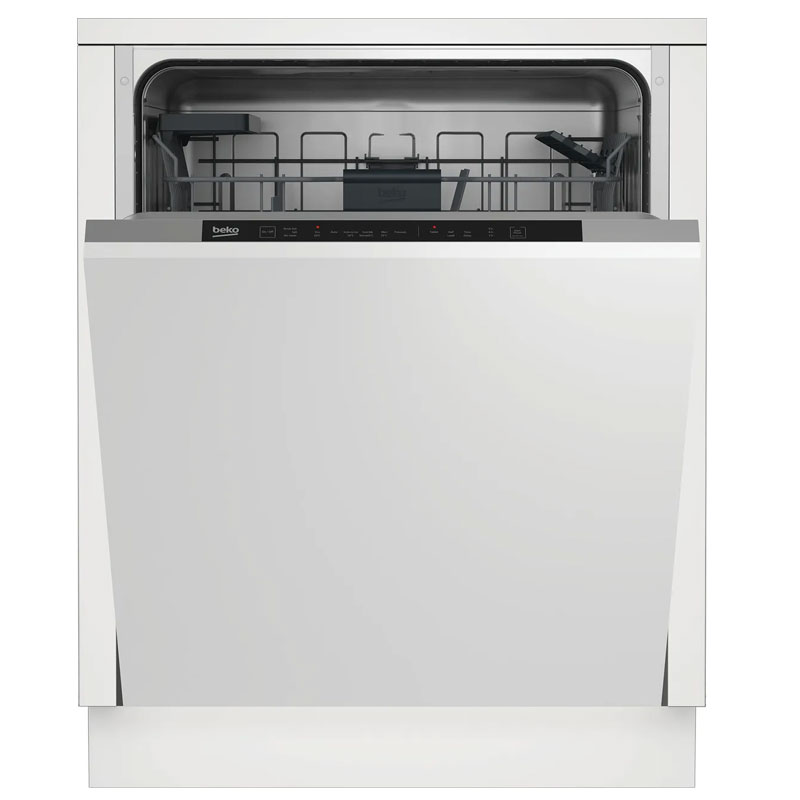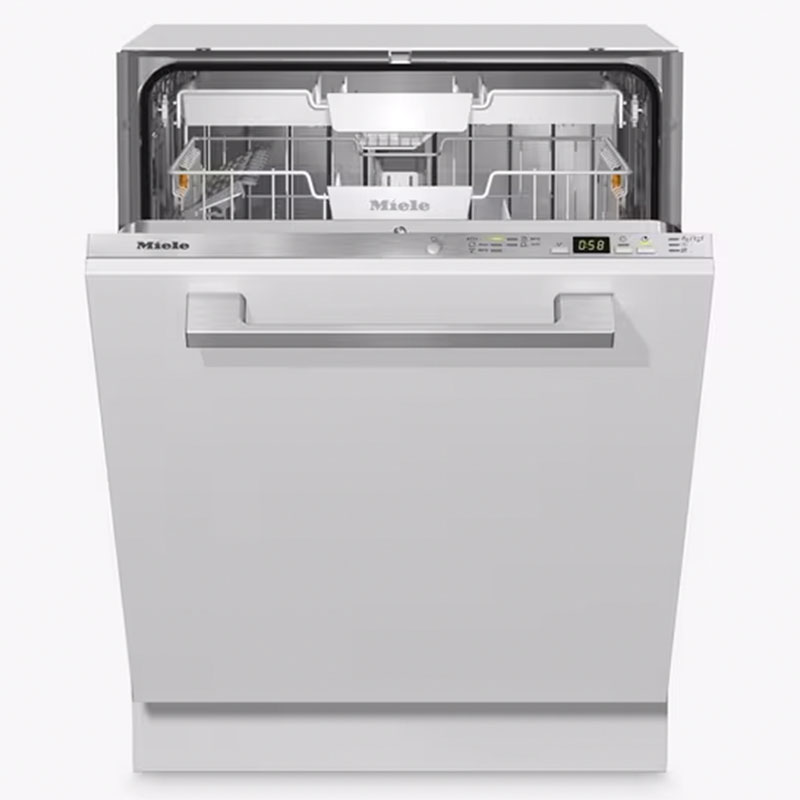What is an integrated dishwasher? Here we reveal the pros, cons and how it compares with semi-integrated and freestanding dishwashers
If you’re asking yourself what is an integrated dishwasher, we’re here to help. Find out how they could be the perfect appliance for your next kitchen makeover
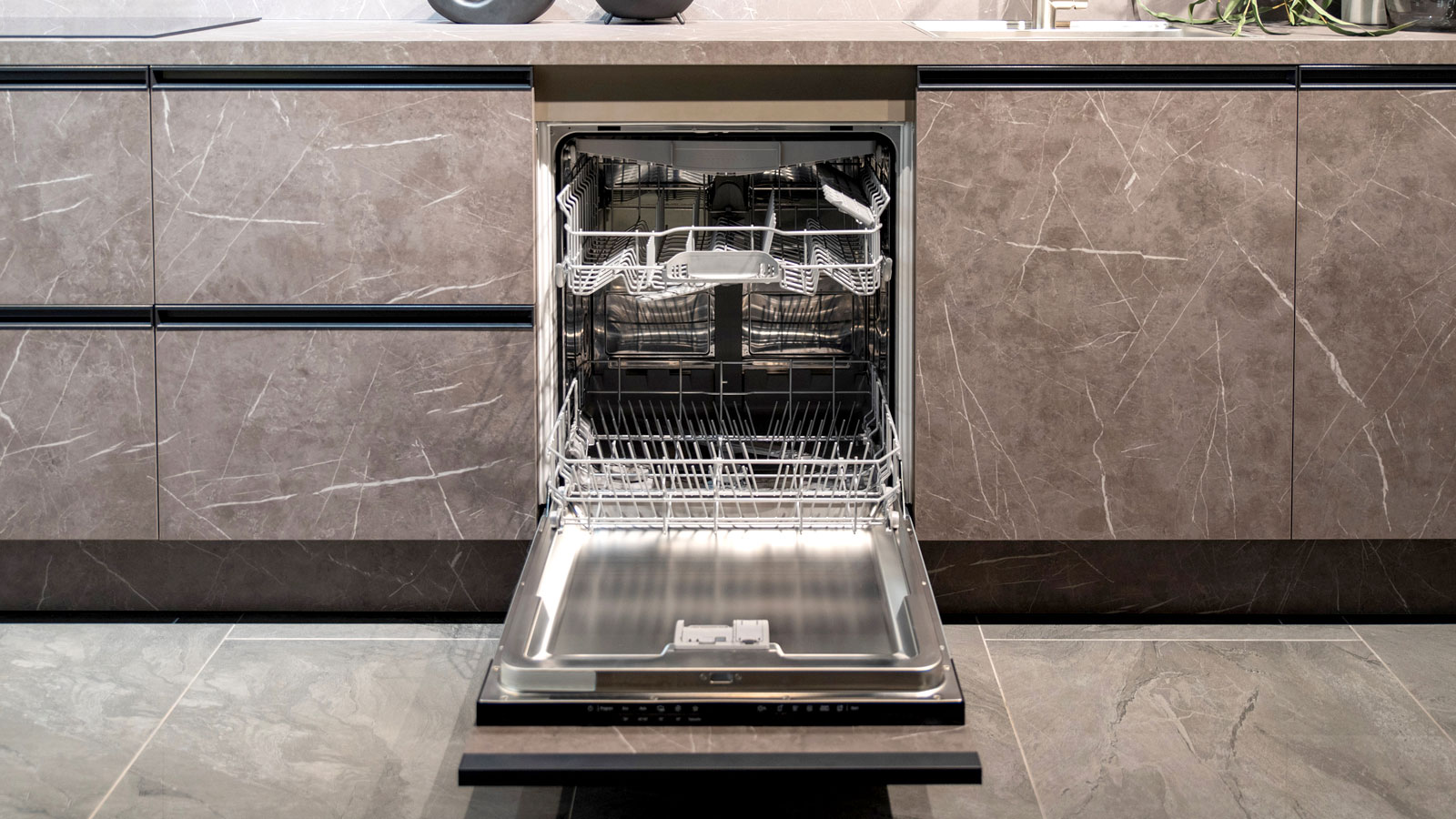
What is an integrated dishwasher? Yes, there’s more than one type of dishwasher to choose from. But if you want one that’s hidden in plain sight, and won’t spoil the crisp clean aesthetic of your kitchen, then an integrated dishwasher should be top of your list.
A fully integrated dishwasher will fit neatly into your existing kitchen cabinets and allow you to add a front that perfectly matches the rest of your kitchen design. And, the best integrated dishwashers are super quiet and include features and functions to make sure your cutlery and crockery is clean, sterile and ready to use again.
Try one of these top quality integrated dishwashers
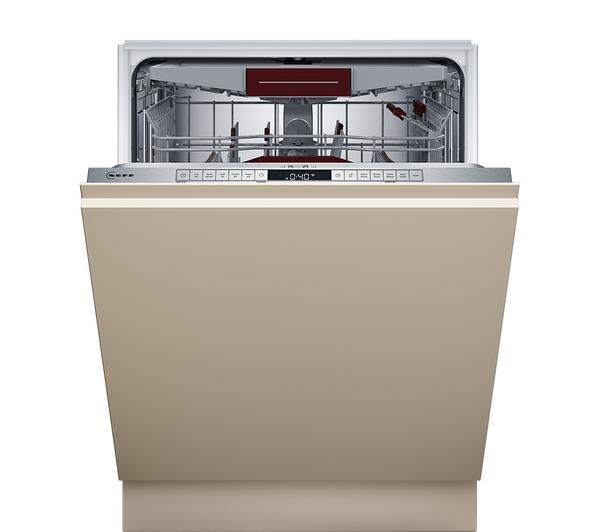
The Neff N70 has a host of features including a 70°C intensive program to tackle the toughest stains and a function to reduce noise to a minimum.

Part of the award winning training team at Miele GB, Sophie is the go-to person for advice on all sorts of subjects - from tips on how to deep clean the home ready for spring to how to choose the best appliances for the kitchen.
What is an integrated dishwasher?
An integrated dishwasher, also called fully-integrated, is specifically designed by manufacturers to allow a false cupboard door to be slotted onto the front. This means the appliance can blend in with the rest of your kitchen units and kitchen design, only becoming apparent when it is opened to be filled or emptied.
“Integrated dishwashers are ideal for homeowners looking to achieve a seamless, sophisticated kitchen design that is fuss-free," explains Sophie Lane, Product Training Manager at Miele GB. "Unlike freestanding dishwashers, an integrated dishwasher can be concealed with a door matched to the cabinetry – so there’s no compromise on the kitchen aesthetic."
Integrated dishwashers come in all shapes and sizes too, including the relatively new kitchen trend of 'dish drawers', which allows smaller families to run one drawer at a time for half loads or two drawers for normal-size loads.
"The single drawer is perfect for smaller families who may not need a full-sized dishwasher," says Jo Jackson, Product Manager, Fisher & Paykel, that offer a product called DishDrawer™. "The DishDrawer is as easy to open and close as a kitchen drawer and its convenient location at bench height minimise bending for an easier loading experience."
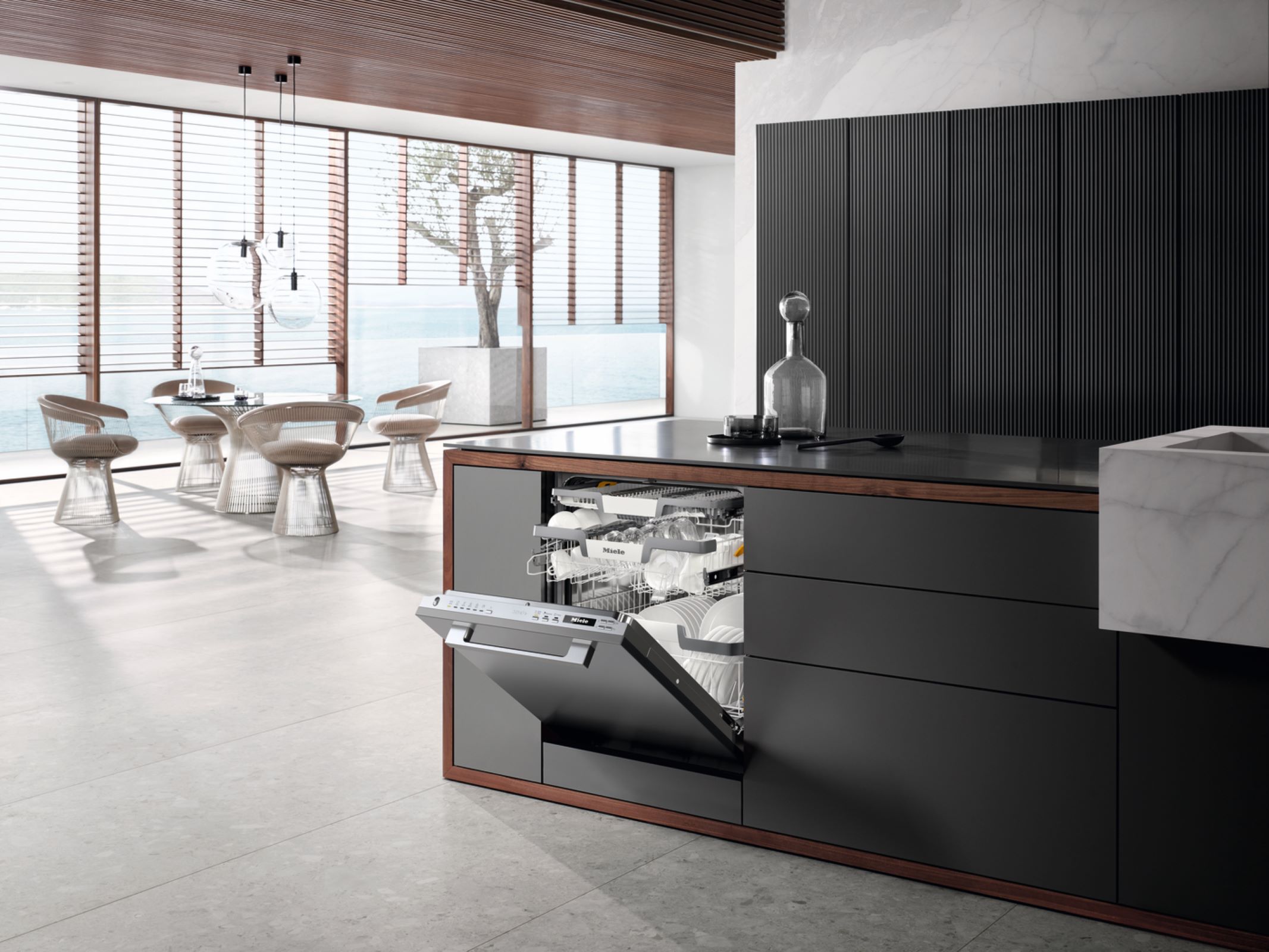
What are the pros and cons of integrated dishwashers?
While the main bonus of going fully-integrated is a sleek-looking kitchen design, this isn't the only benefit.
Integrated dishwashers are built to be discrete, meaning manufacturers have focused on designing dishwashers that don't make a lot of noise. Integrated dishwasher are being designed to be smart too, hooking up to your wifi and even calculating how much detergent to use depending on load weight. Basically there's plenty of innovation happening with integrated dishwashers.
On the flip side however, integrated dishwashers tend to not follow you with a house move because of how much work there is installing it in the first place.
Installation includes the usual connection of a water supply but it also gets fiddly when fitting the false cupboard door at the correct height and affixing the dishwasher itself so it doesn't fall forward each time you open the door.
"Most integrated appliances will be developed to be counter depth and will allow space for the pipes for water and waste but bear in mind that most appliances will need to have a socket in the cupboard next to them," explains Fisher & Paykel's Jo Jackson.
"Most modern appliances have specialist hinges which allow doors to open with minimal gaping. The last thing you need with a beautiful new kitchen is a large gap around the appliances that collects dust and debris. Look for gaping between 3mm- 6mm for the best effect."
While prices are lowering as they become more popular, typically integrated dishwashers tend to be more expensive than freestanding dishwashers.
What is a semi-integrated dishwasher?
There is an option to semi-integrate your dishwasher, if you prefer to flash a little tech. A semi-integrated dishwasher has the benefit of fitting in with your existing units but with an additional band of buttons above the integrated false kitchen cabinet door. This means you can operate the dishwasher without having to open the door to find the control panel.
The main pro of a semi-integrated dishwasher over integrated is one of preference in design and functionality. You won't be able to see if a fully-integrated dishwasher has finished its cycle by glancing at it, but with a semi-integrated dishwasher you will be able to see the lights flashing on the front of the machine.
When thinking of new kitchen remodel ideas a dishwasher will be a key component. But how much does a new kitchen cost? If your budget won't stretch to want you want think about investing in a second hand kitchen to get what you want for less.
Get the Homebuilding & Renovating Newsletter
Bring your dream home to life with expert advice, how to guides and design inspiration. Sign up for our newsletter and get two free tickets to a Homebuilding & Renovating Show near you.

Amy spent over a decade in London editing and writing for The Daily Telegraph, MailOnline, and Metro.co.uk before moving to East Anglia where she began renovating a period property in rural Suffolk. During this time she also did some TV work at ITV Anglia and CBS as well as freelancing for Yahoo, AOL, ESPN and The Mirror. When the pandemic hit she switched to full-time building work on her renovation and spent nearly two years focusing solely on that. She's taken a hands-on DIY approach to the project, knocking down walls, restoring oak beams and laying slabs with the help of family members to save costs. She has largely focused on using natural materials, such as limestone, oak and sisal carpet, to put character back into the property that was largely removed during the eighties. The project has extended into the garden too, with the cottage's exterior completely re-landscaped with a digger and a new driveway added. She has dealt with de-listing a property as well as handling land disputes and conveyancing administration.
